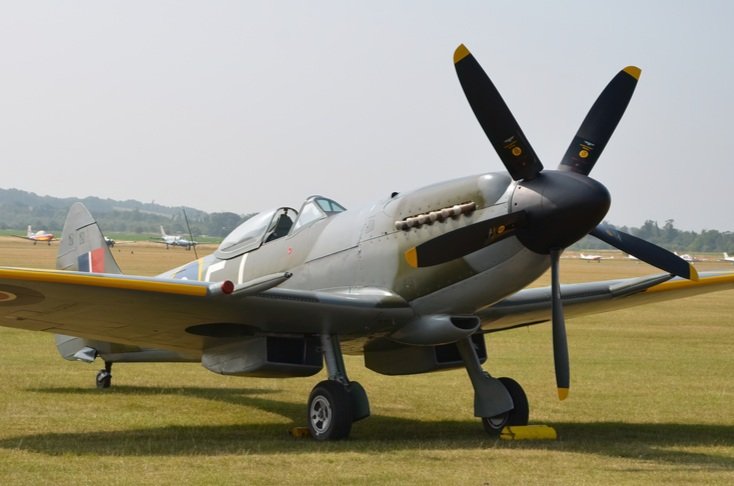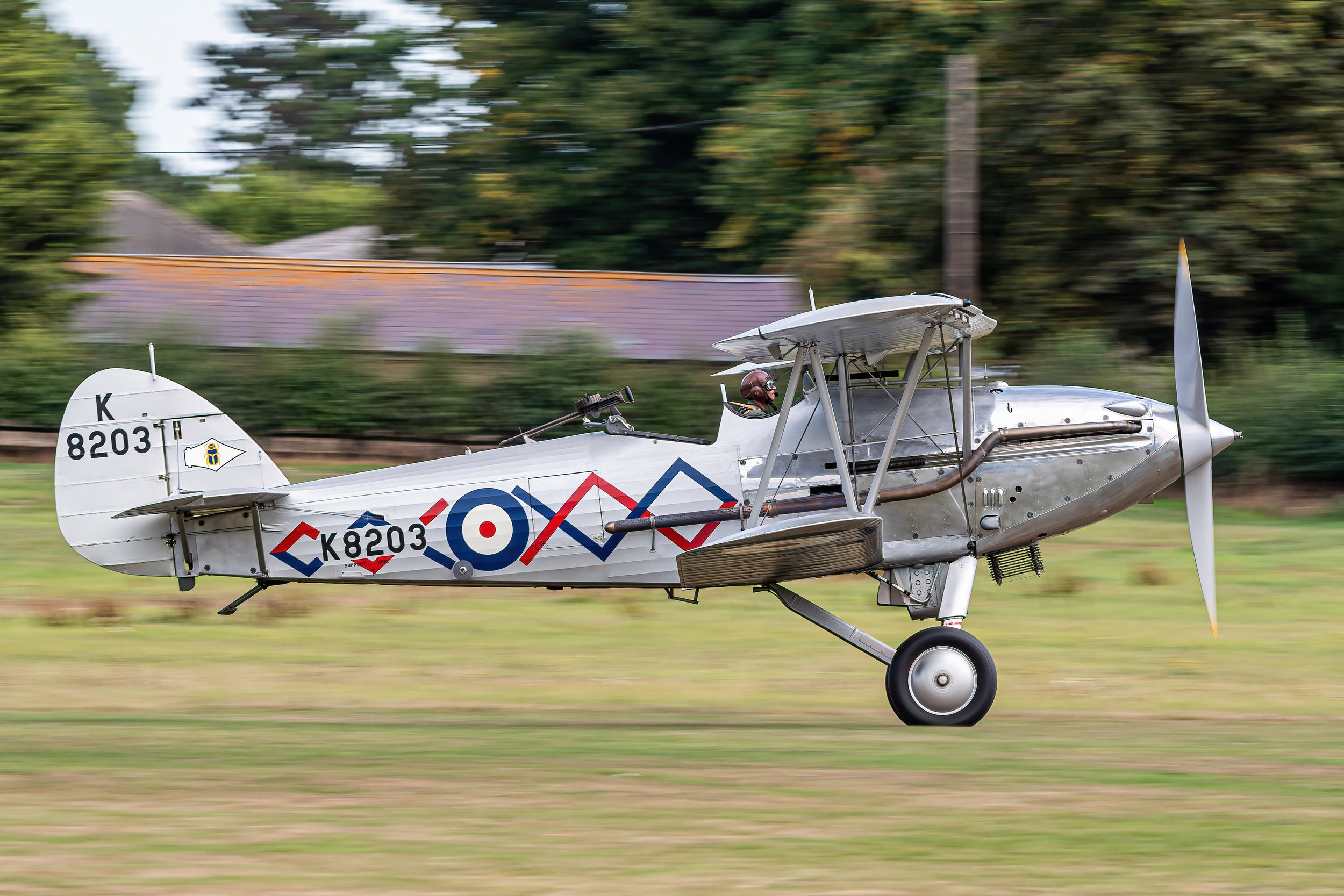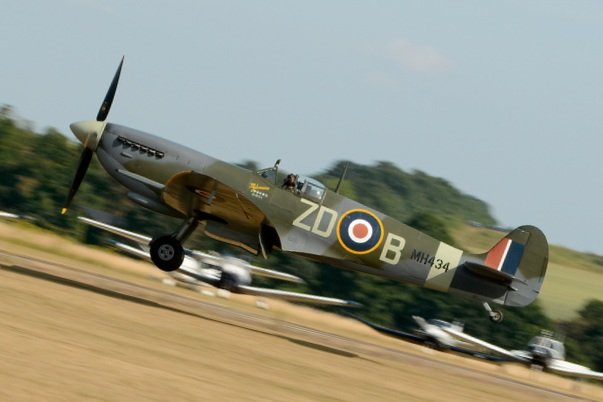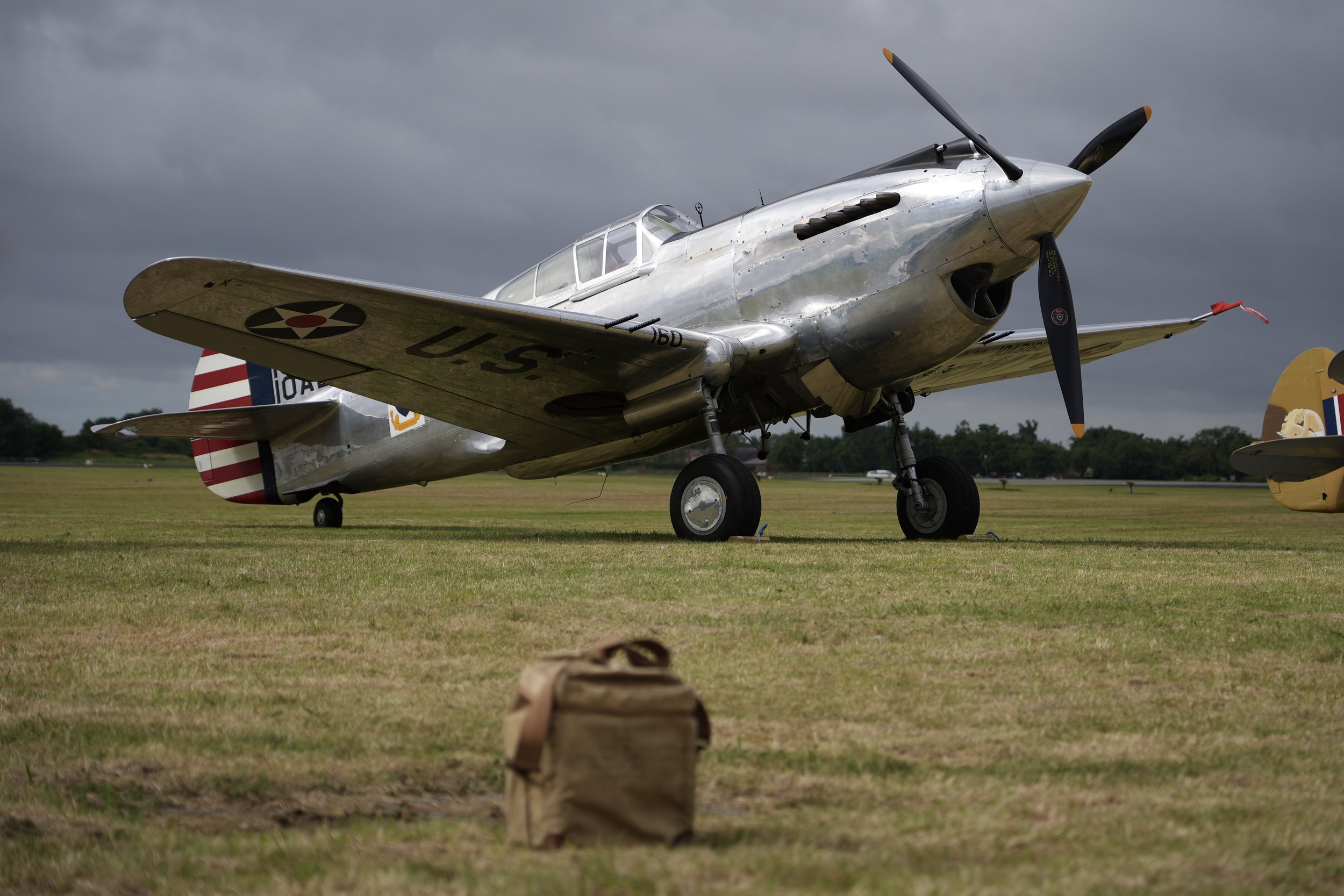Thunderbolt G-THUN
Year built
1945
Aircraft
P-47D Thunderbolt
Base
Sywell Aerodrome
'Nellie' was built in 1945 at Republic's Evansville factory in Indiana. Serialled 45-49192 the aircraft was built originally as a P-47D-40-RA. Detail of its service with the USAAF is not known, although it did serve with the Air Training Command during the last few months of the War, and was eventually stored at Tinker AFB in Oklahoma with the Air Material Command.
It was restored to full operational status at Hensley Field in Texas in 1952, after the Rio Pact had been signed by the USA, and was assigned to the Military Assistance Program in September of that year.
In 1953 it formed part of a group of P-47's that found their way to the Peruvian Air Force and it gave good service until 1967, initially as a front-line fighter and then as a fighter trainer.
In 1975 the incomplete fuselage was obtained from a trade school by David C. Tallichet from the Yesterdays Air Force who stored it at Barstow-Daggett in California until 1980.
In 1980 Wayne Williams bought the incomplete fuselage and advertised it for sale as a project. Shortly after being put for sale, the fuselage was sold to Robin Collard who transported it by road to Tahoe, Nevada where the restoration began. The P-47N fuselage provided the basis of the composite restoration with parts being sourced from USAAF s/n 45-49192 c/r N47DD and a wing obtained from South America. The resulting airframe adopted the ID of USAAF s/n 45-49192.
In 1982 the project was sold to Jon Ward and later to Fighter Rebuilders who continued the restoration.
In August 1985 'Nellie' performed her first post-restoration flight and in January 1986 was transported by ship to the UK where she was reassembled and performed the test flight on the 24th February 1986.
In May 1989 she received a new United States Army Air Forces (USAAF) 78FG/82FS colour scheme and D-Day Stripes.
On the 18th of June 1999, the Thunderbolt was sold to Patina Ltd / The Fighter Collection where she received a new civil registration G-THUN as well as the new colour scheme of the LH X, 226671, 78FG/82FS “No Guts No Glory!” representing Lt. Col. Ben Mayo's aircraft.
In July 2006 the aircraft was disassembled and shipped to the US where it flew with the new civil registration N147PF up until 2018.
On the 23rd of February 2018, the Thunderbolt was shipped back to the UK where she received the new colour scheme representing F4-J, 549192 “Nellie B”.
| Back to Top |
Republic P-47D Thunderbolt
The Republic P-47 Thunderbolt is a World War II-era fighter aircraft produced by the American aerospace company Republic Aviation from 1941 through 1945. Its primary armament was eight .50-caliber machine guns, and in the fighter-bomber ground-attack role, it could carry five-inch rockets or a bomb load of 2,500 lb (1,100 kg). When fully loaded, the P-47 weighed up to eight tons, making it one of the heaviest fighters of the war.
The Thunderbolt was effective as a short-to medium-range escort fighter in high-altitude air-to-air combat and ground attack in both the European and Pacific theatres. The P-47 was designed around the powerful Pratt & Whitney R-2800 Double Wasp 18-cylinder radial engine which also powered two U.S. Navy/U.S. Marine Corps fighters, the Grumman F6F Hellcat and the Vought F4U Corsair. An advanced turbo-supercharger system ensured the aircraft's eventual dominance at high altitude, while also influencing its size and design.
The P-47 was one of the main United States Army Air Forces (USAAF) fighters of World War II and also served with other Allied air forces, including those of France, the United Kingdom, and the Soviet Union. Mexican and Brazilian squadrons fighting alongside the USAAF also flew the P-47.
The armoured cockpit was relatively roomy and comfortable and the bubble canopy introduced on the P-47D offered good visibility. Nicknamed the "Jug" owing to its appearance if stood on its nose, the P-47 was noted for its firepower, as well as its ability to resist battle damage and remain airworthy. A present-day U.S. ground-attack aircraft, the Fairchild Republic A-10 Thunderbolt II, takes its name from the P-47.
The P-47 Thunderbolt was designed by Alexander Kartveli, a man of Georgian descent. It was to replace the Seversky P-35 developed earlier by a Russian immigrant named Alexander P. de Seversky. Both had fled from their homeland, Tbilisi, in Georgia to escape the Bolsheviks. In 1939, Republic Aviation designed the AP-4 demonstrator powered by a Pratt & Whitney R-1830 radial engine with a belly-mounted turbocharger. A small number of Republic P-43 Lancers were built but Republic had been working on an improved P-44 Rocket with a more powerful engine, as well as on the AP-10 fighter design. The latter was a lightweight aircraft powered by the Allison V-1710 liquid-cooled V-12 engine and armed with two .50 in (12.7 mm) M2 Browning machine guns mounted in the nose and four .30 in (7.62 mm) M1919 Browning machine guns mounted in the wings. The United States Army Air Corps (USAAC) backed the project and gave it the designation XP-47.
In the spring of 1940, Republic and the USAAC concluded that the XP-44 and the XP-47 were inferior to Luftwaffe fighters. Republic tried to improve the design, proposing the XP-47A but this failed. Kartveli then designed a much larger fighter, which was offered to the USAAC in June 1940. The Air Corps ordered a prototype in September as the XP-47B. The XP-47A, which had little in common with the new design, was abandoned. The XP-47B was of all-metal construction (except for the fabric-covered tail control surfaces) with elliptical wings, with a straight leading edge that was slightly swept back. The air-conditioned cockpit was roomy and the pilot's seat was comfortable—" like a lounge chair", as one pilot later put it. The canopy doors hinged upward. Main and auxiliary self-sealing fuel tanks were placed under the cockpit, giving a total fuel capacity of 305 US gal (254 imp gal; 1,155 l).
A P-47 engine with the cowling removed. Uncompressed air enters through an intake under the engine and is carried to the turbosupercharger behind the pilot via the silver duct at the bottom. The olive-green pipe returns the compressed air to the engine
Power came from a Pratt & Whitney R-2800 Double Wasp two-row 18-cylinder radial engine producing 2,000 hp (1,500 kW) — the same engine that would power the prototype Vought XF4U-1 fighter to just over 400 mph (640 km/h) in October 1940—with the Double Wasp on the XP-47B turning a four-bladed Curtiss Electric constant-speed propeller of 146 in (3.7 m) in diameter. The loss of the AP-4 prototype to an engine fire ended Kartveli's experiments with tight-fitting cowlings, so the engine was placed in a broad cowling that opened at the front in a "horse collar"-shaped ellipse. The cowling admitted cooling air for the engine, left and right oil coolers, and the turbosupercharger intercooler system. The engine exhaust gases were routed into a pair of wastegate-equipped pipes that ran along each side of the cockpit to drive the turbosupercharger turbine at the bottom of the fuselage, about halfway between cockpit and tail. At full power, the pipes glowed red at their forward ends and the turbine spun at 21,300 rpm. The complicated turbosupercharger system with its ductwork gave the XP-47B a deep fuselage, and the wings had to be mounted in a relatively high position. This was difficult since long-legged main landing gear struts were needed to provide ground clearance for the enormous propeller. To reduce the size and weight of the undercarriage struts and so that wing-mounted machine guns could be fitted, each strut was fitted with a mechanism by which it telescoped out 9 in (23 cm) while they extended.
The XP-47B was very heavy compared with contemporary single-engined fighters, with an empty weight of 9,900 lb (4,500 kg), or 65 per cent more than the YP-43. Kartveli said, "It will be a dinosaur, but it will be a dinosaur with good proportions". The armament was eight .50 calibre (12.7 mm) "light-barrel" Browning AN/M2 machine guns, four in each wing. The guns were staggered to allow feeding from side-by-side ammunition boxes, each with 350 rounds. All eight guns gave the fighter a combined rate of fire of approximately 100 rounds per second.
The XP-47B first flew on 6 May 1941 with Lowry P. Brabham at the controls. Although there were minor problems, such as some cockpit smoke that turned out to be due to an oil drip, the aircraft proved impressive in its early trials. It was lost in an accident on 8 August 1942 but before that mishap, the prototype had achieved a level speed of 412 mph (663 km/h) at 25,800 ft (7,900 m) altitude and had demonstrated a climb from sea level to 15,000 ft (4,600 m) in five minutes.
Though the XP-47B had its share of teething troubles, the newly reorganized United States Army Air Forces placed an order for 171 production aircraft, the first being delivered in December 1941.
| Back to Top |
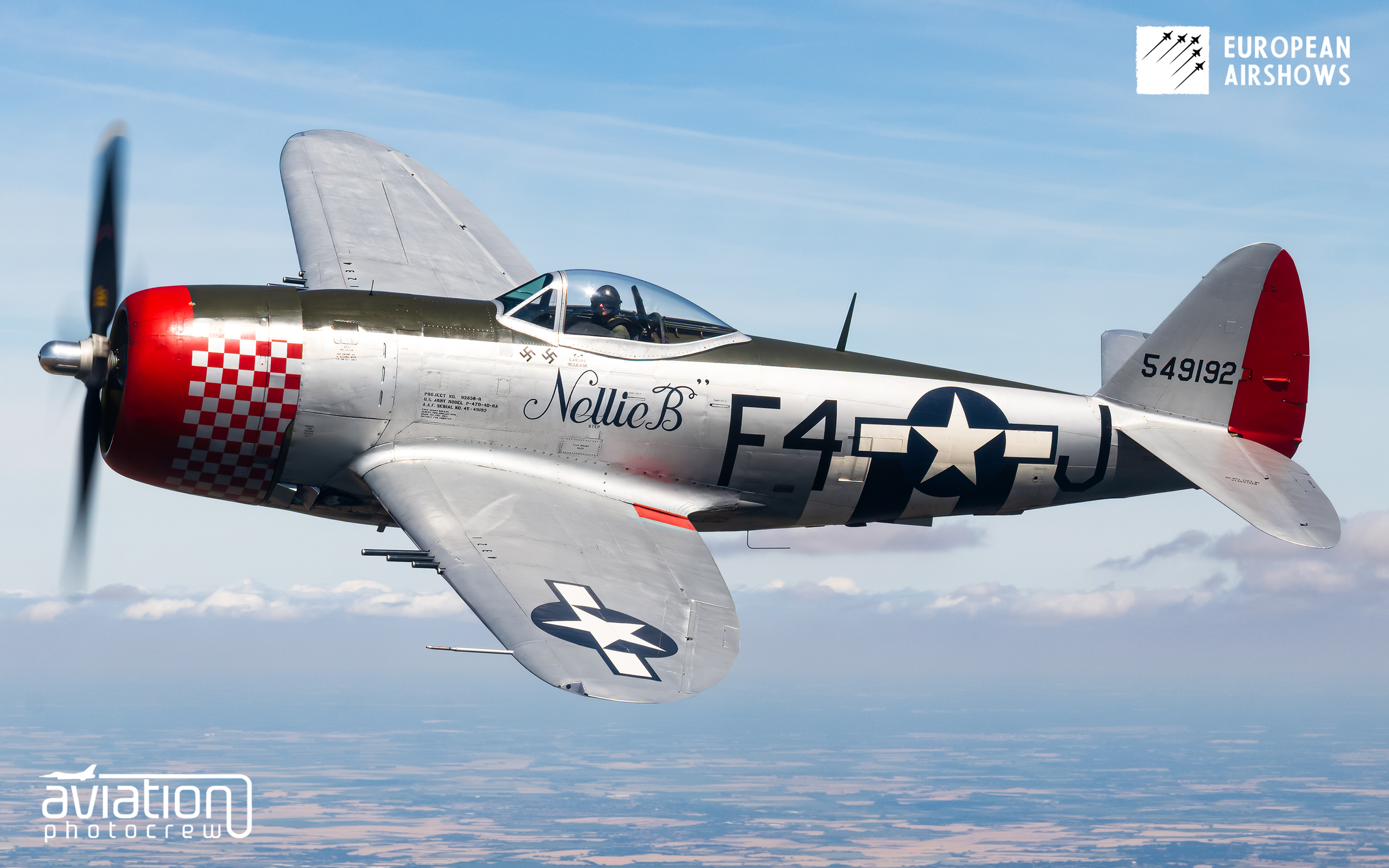

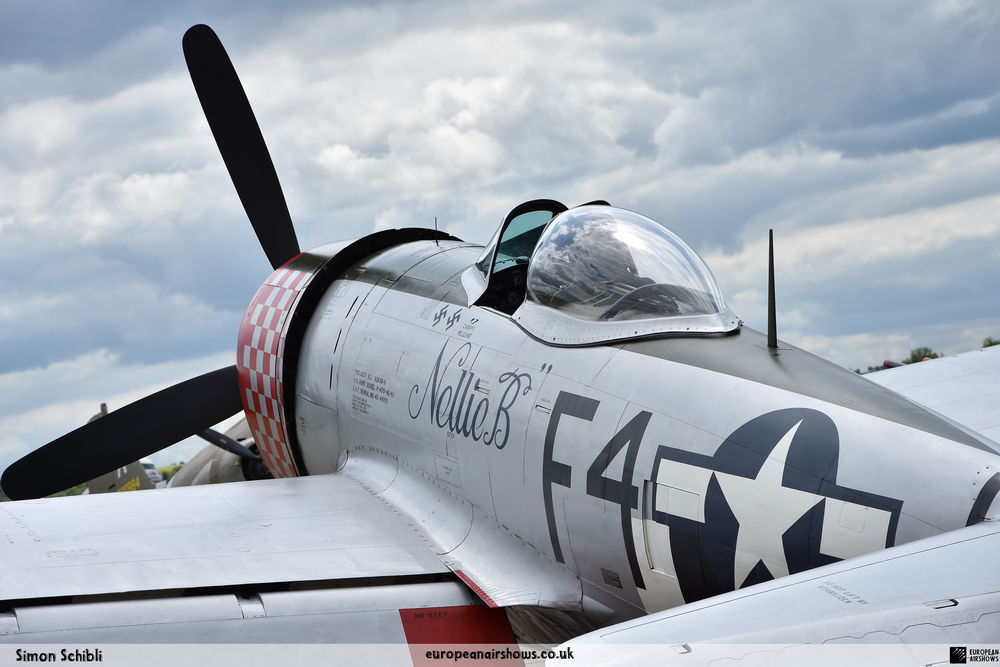
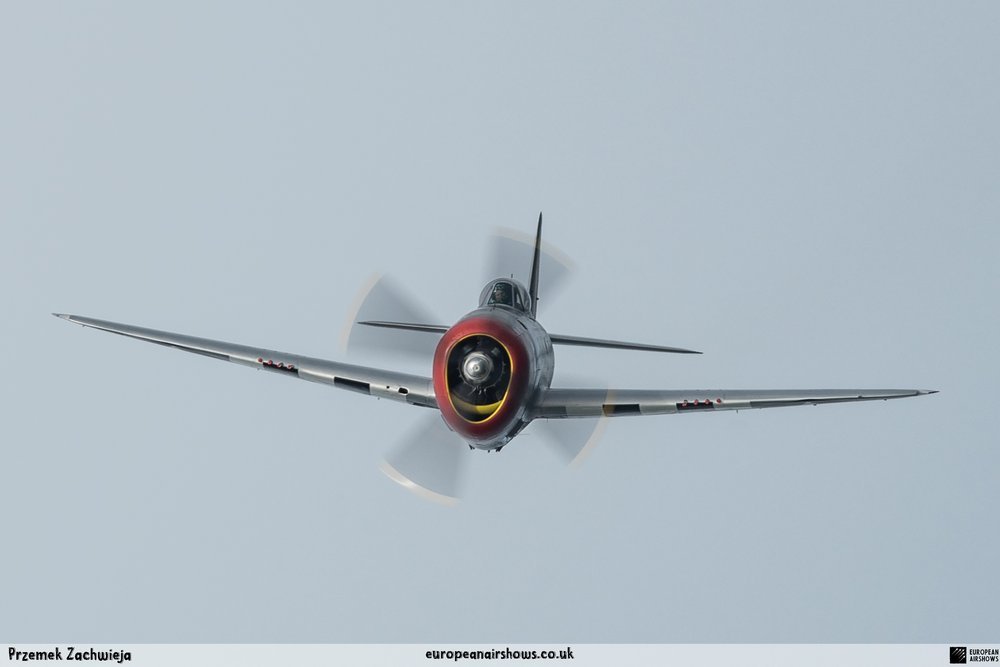
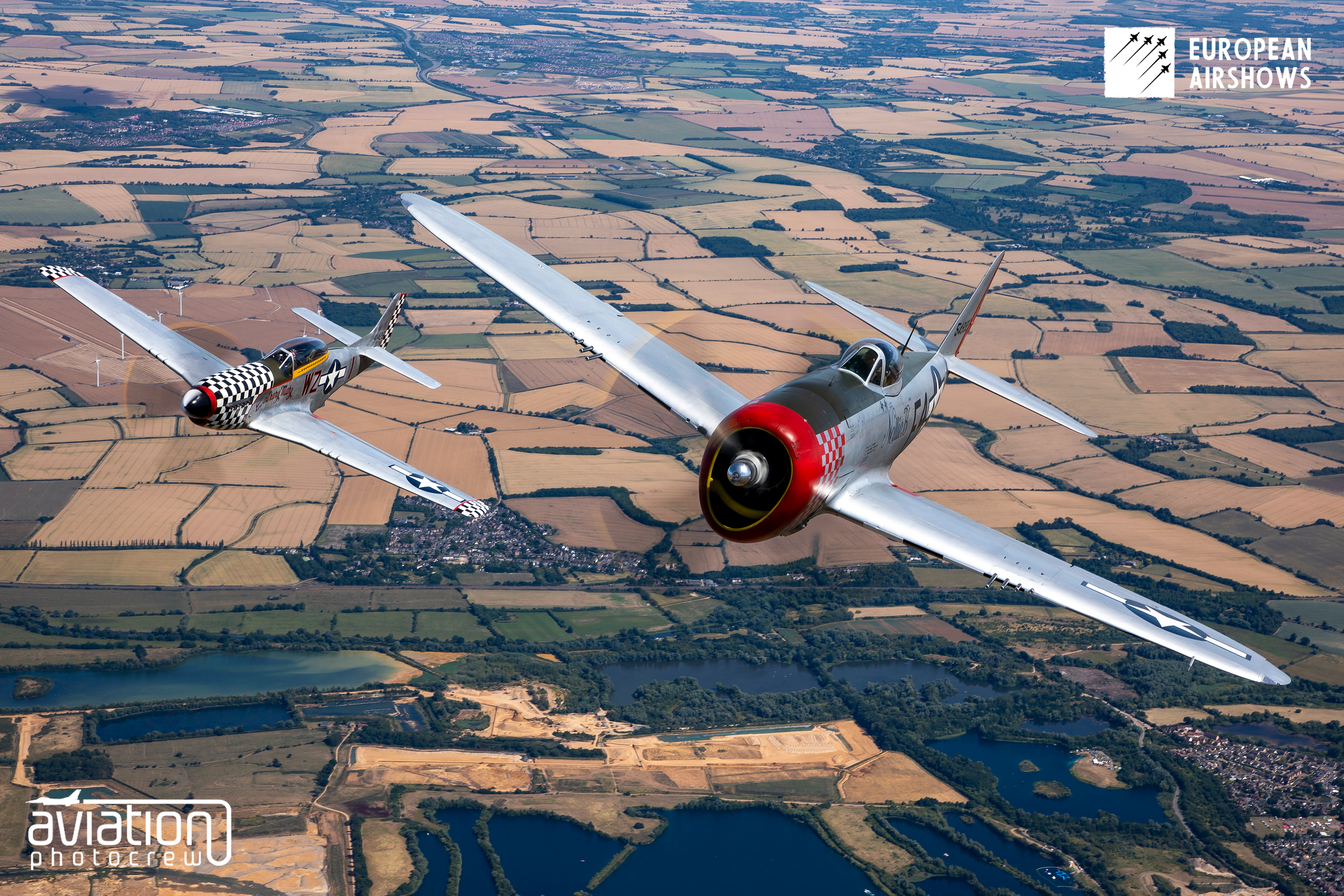
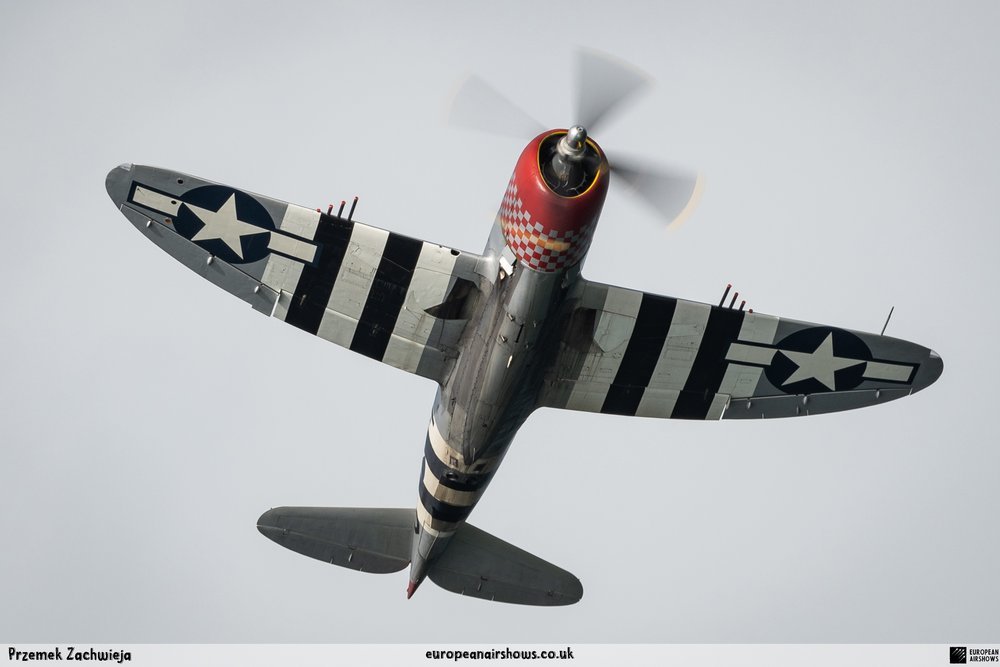
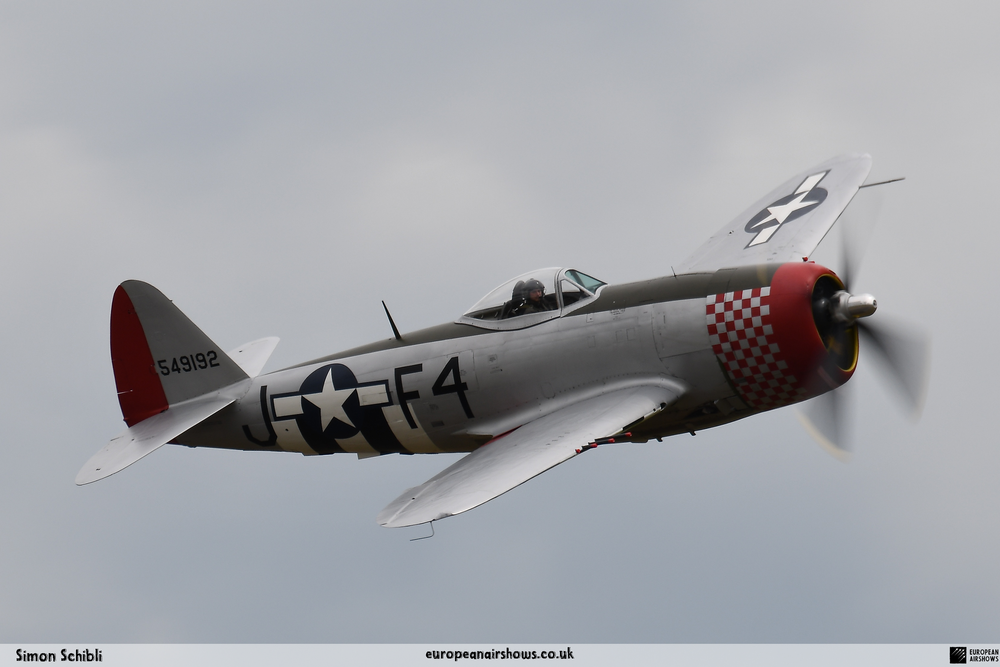

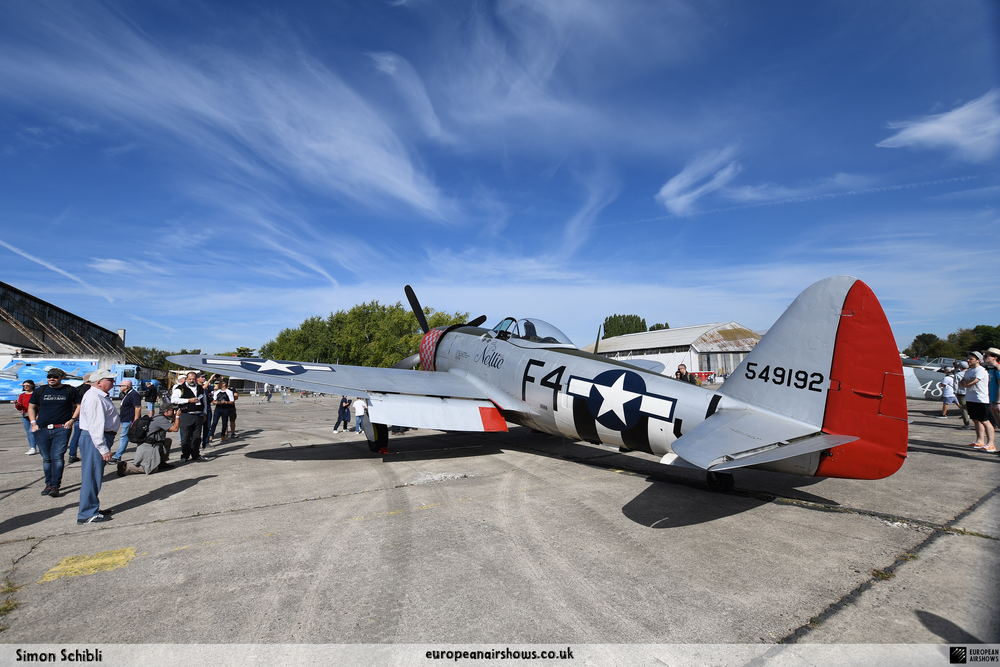
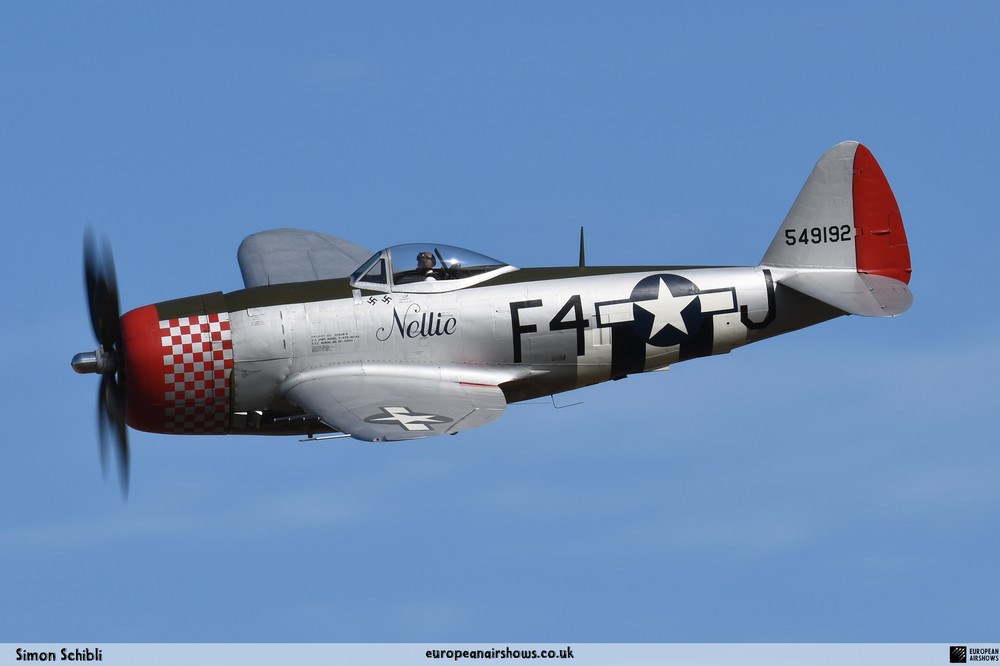
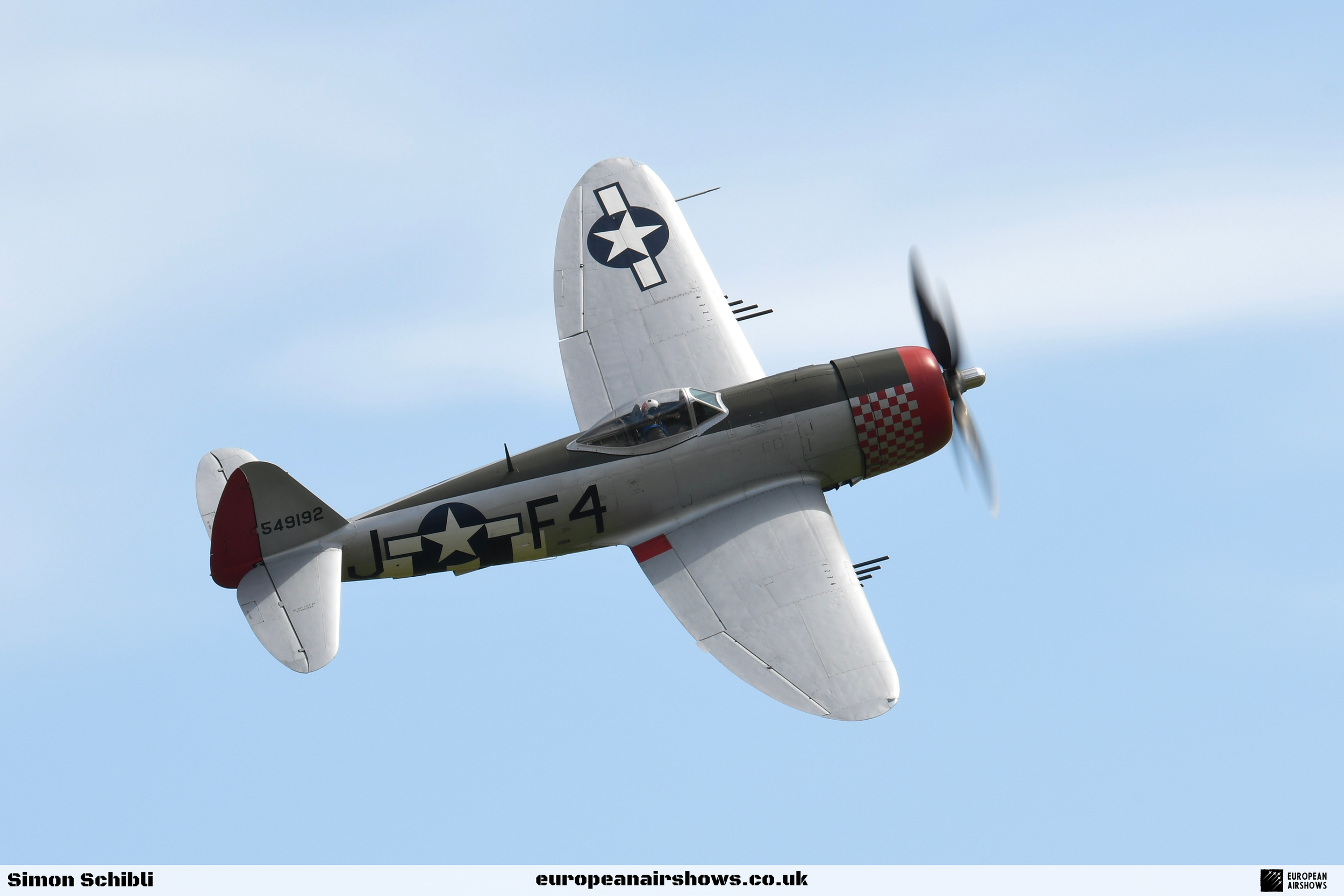
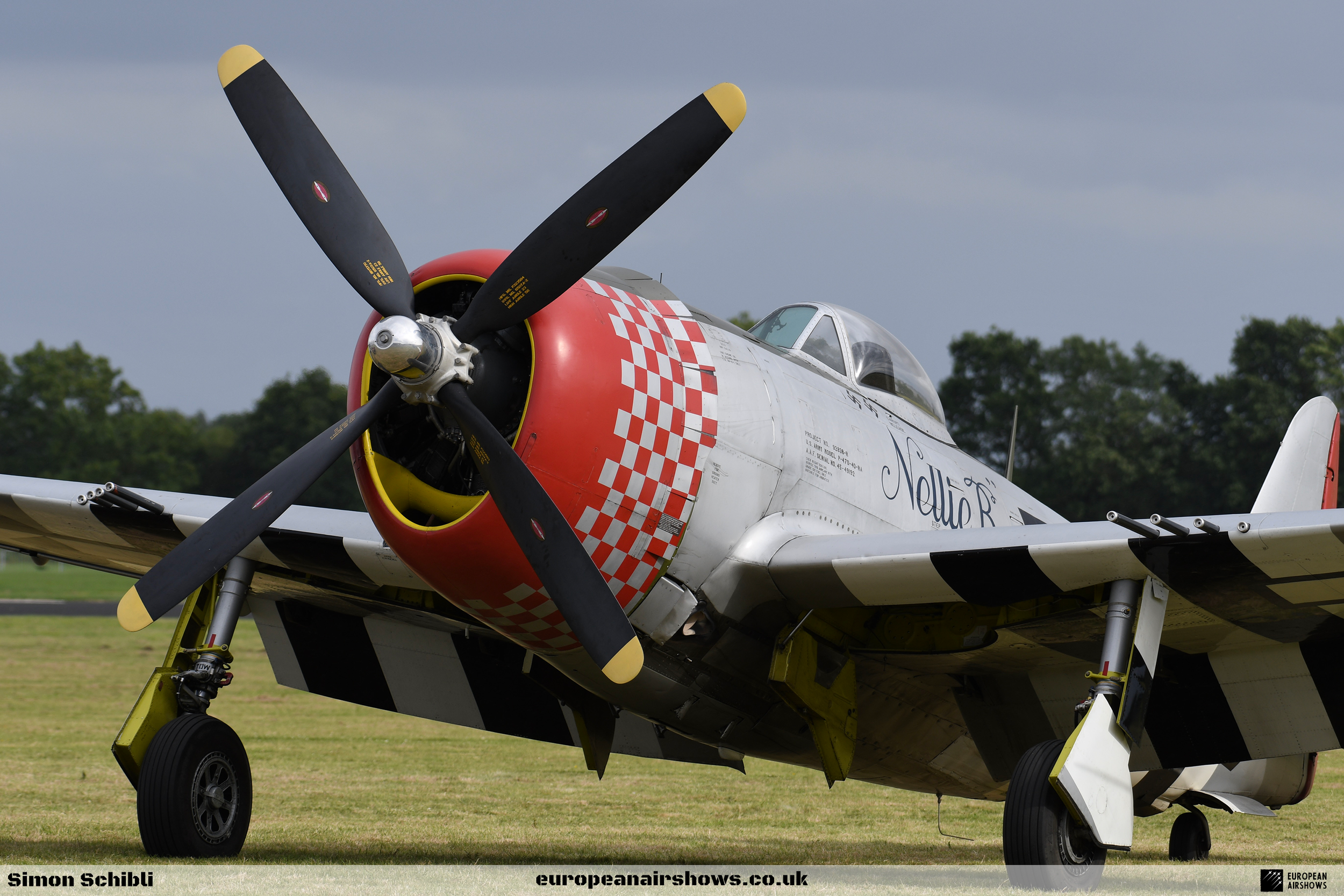
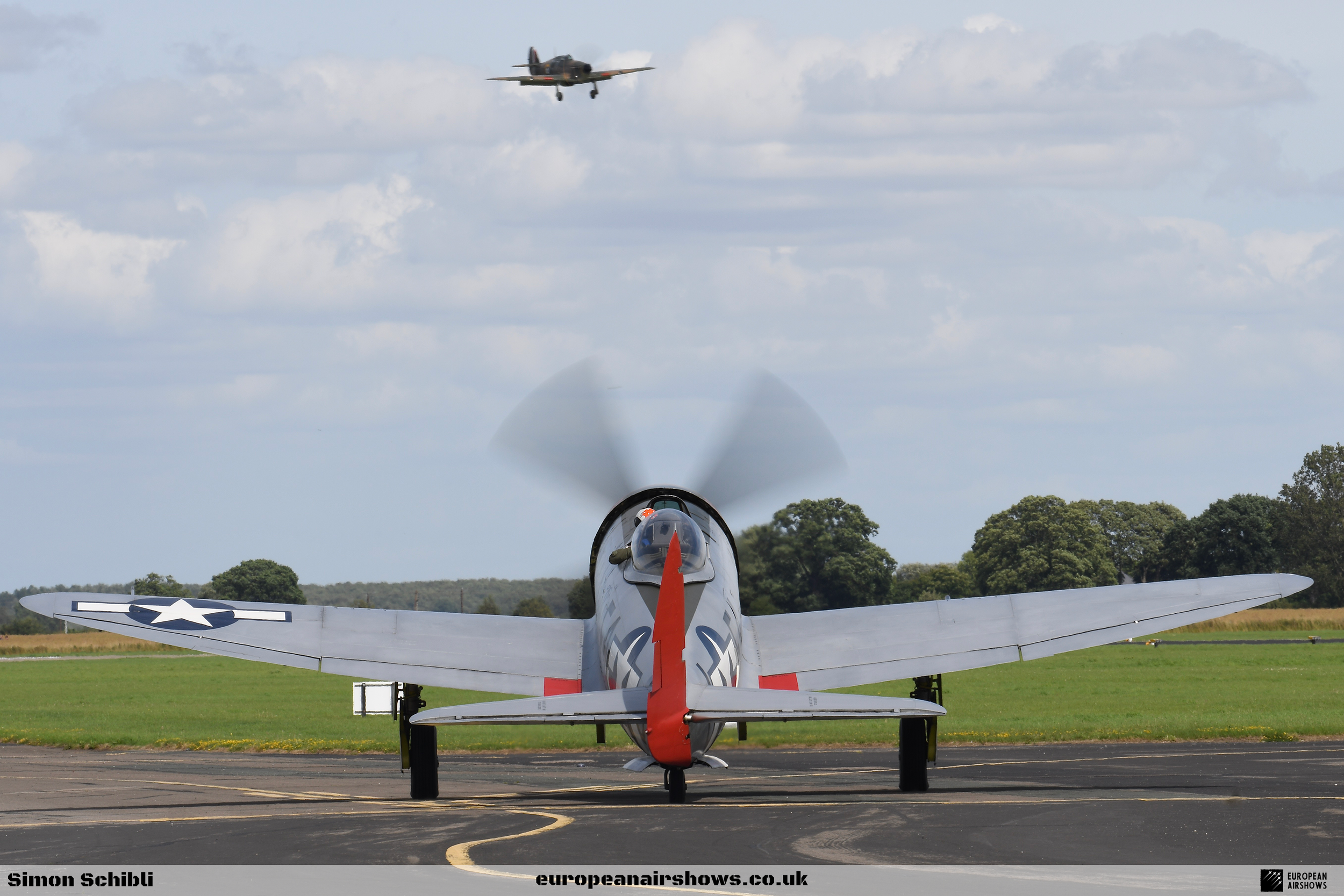
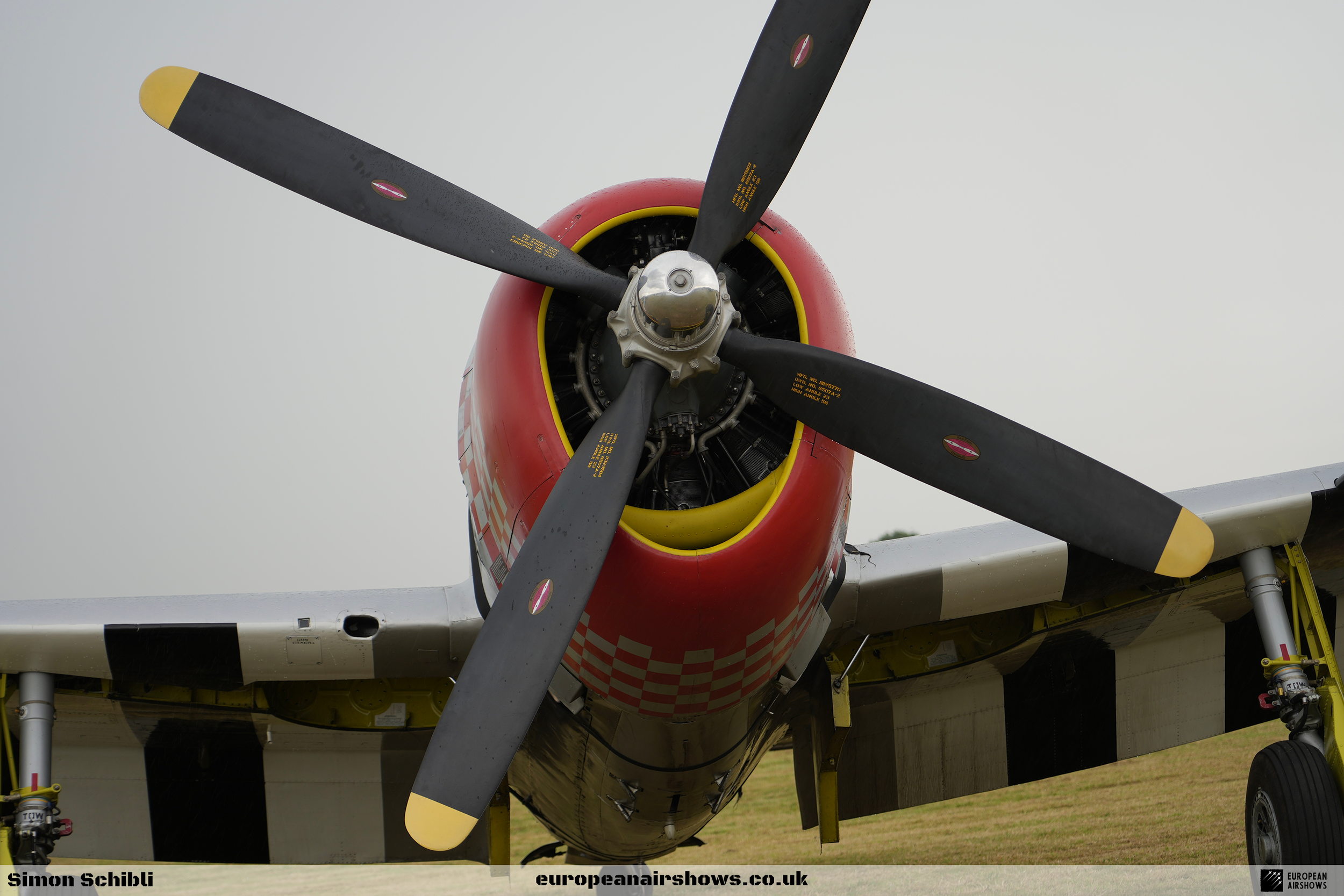
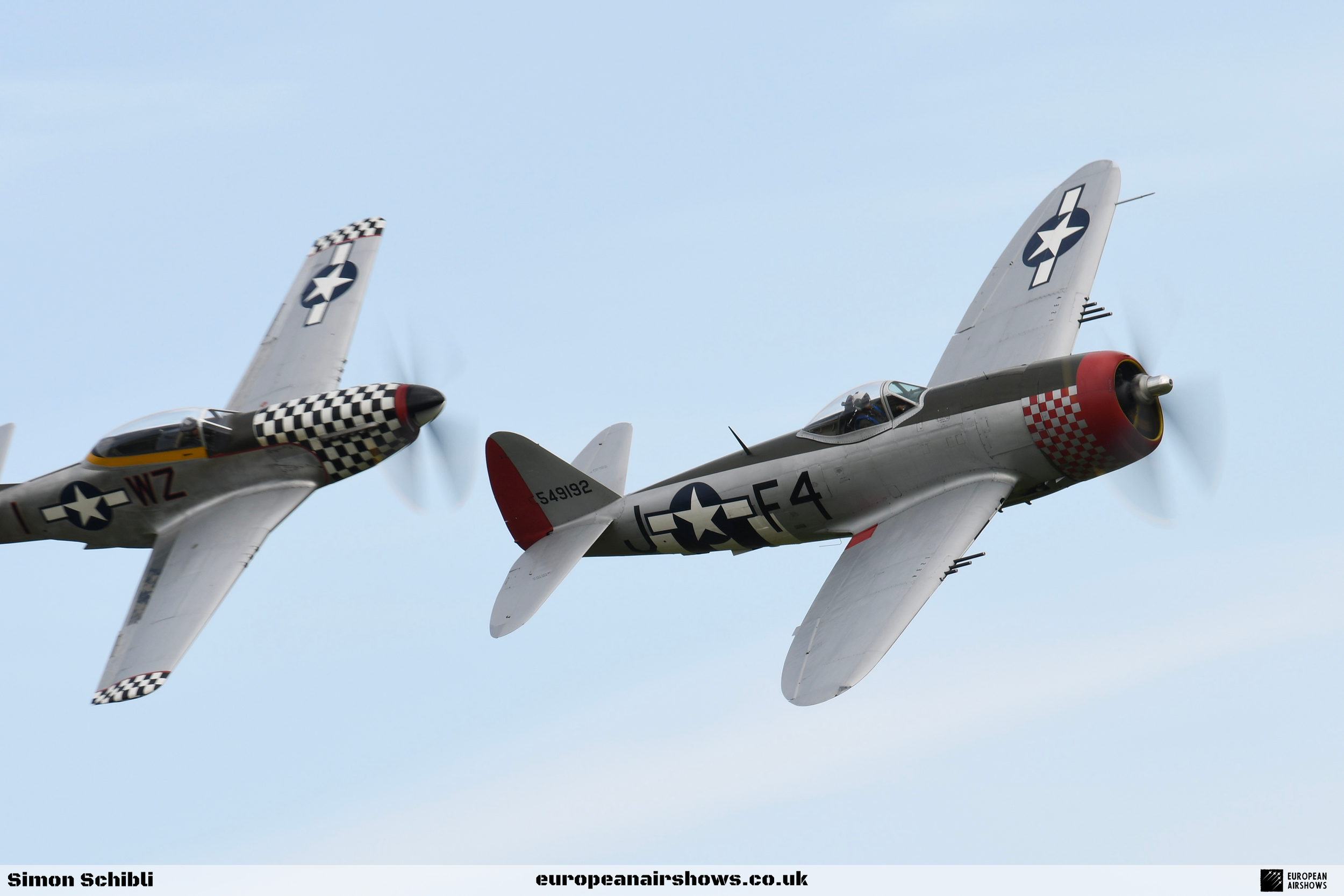
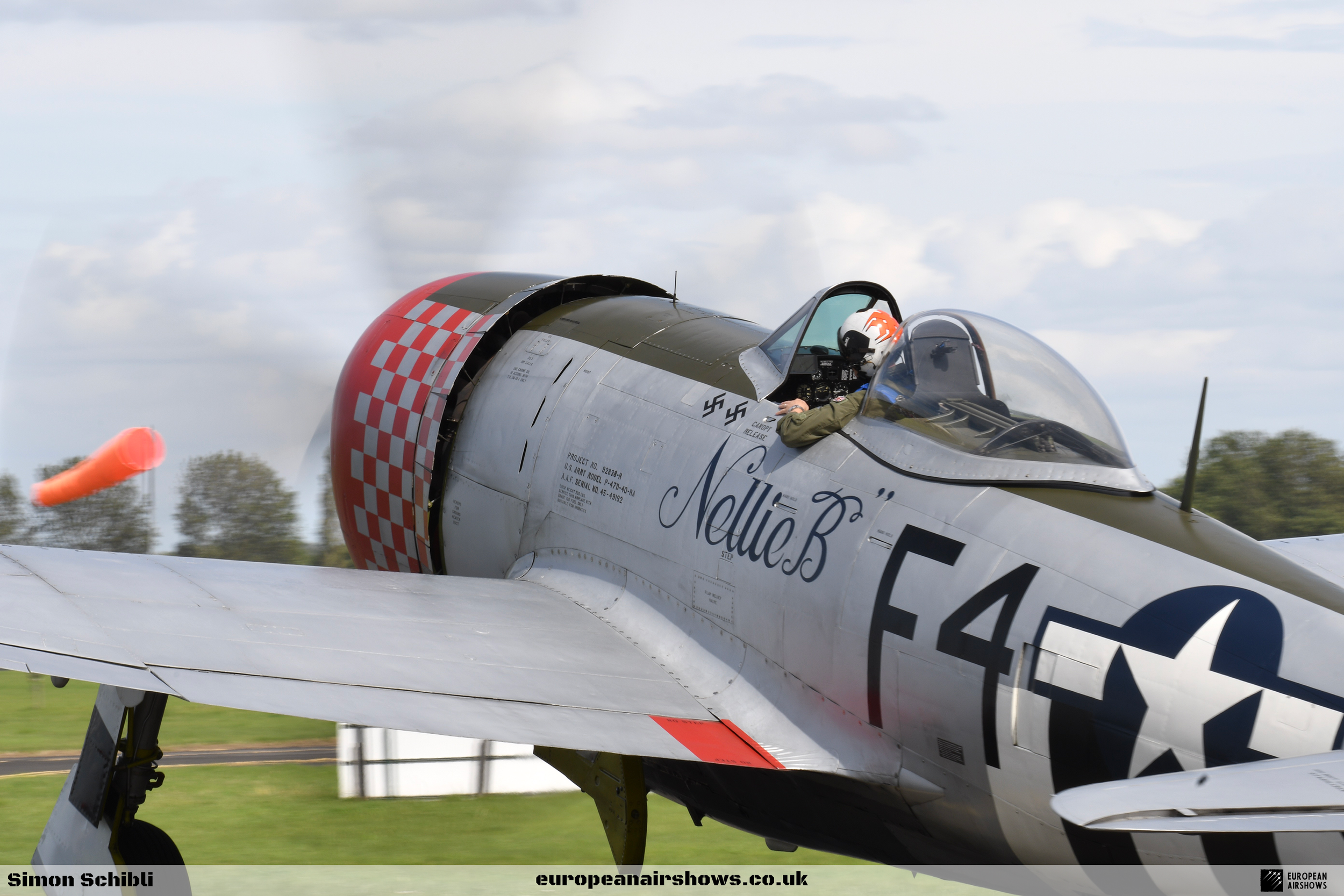

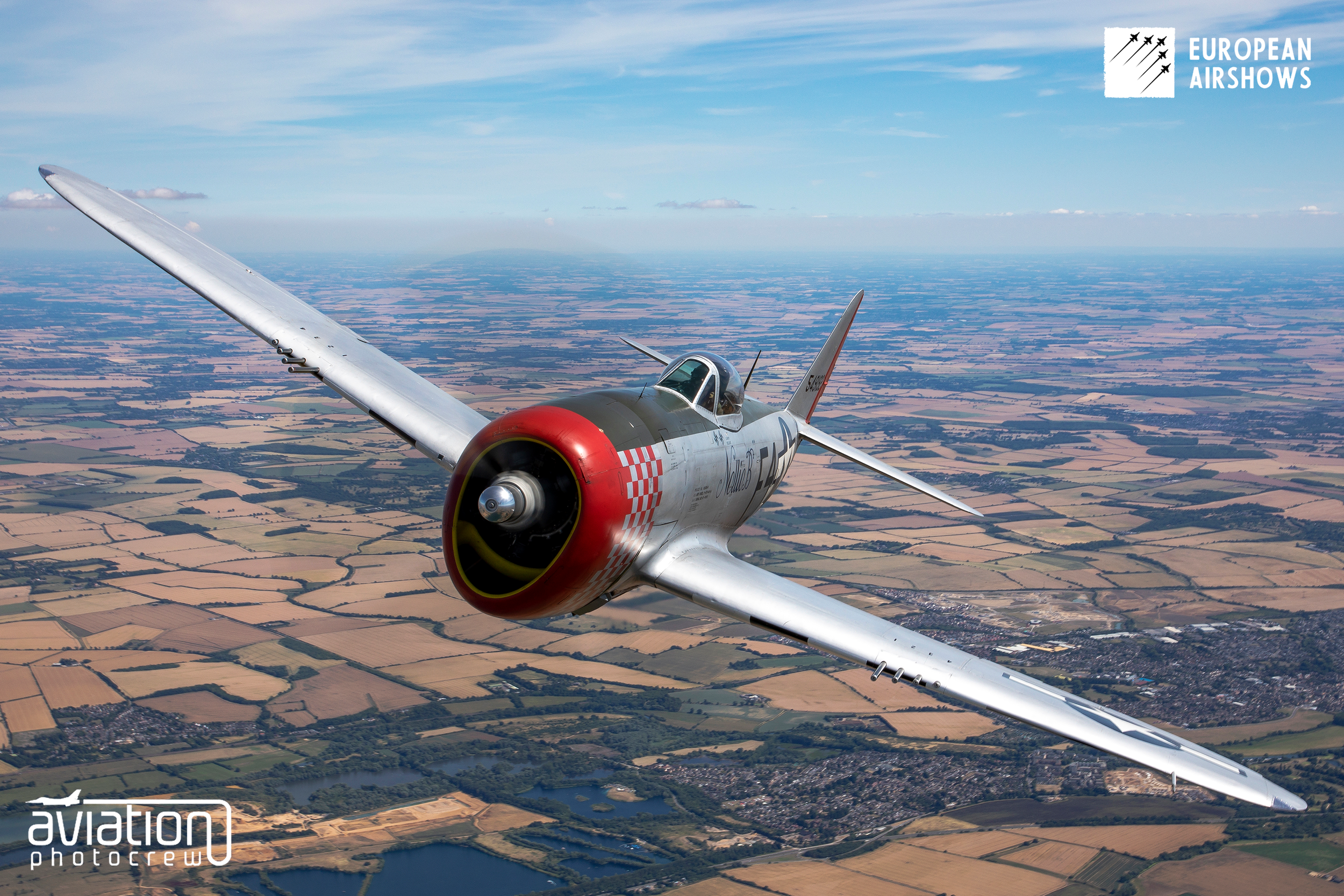
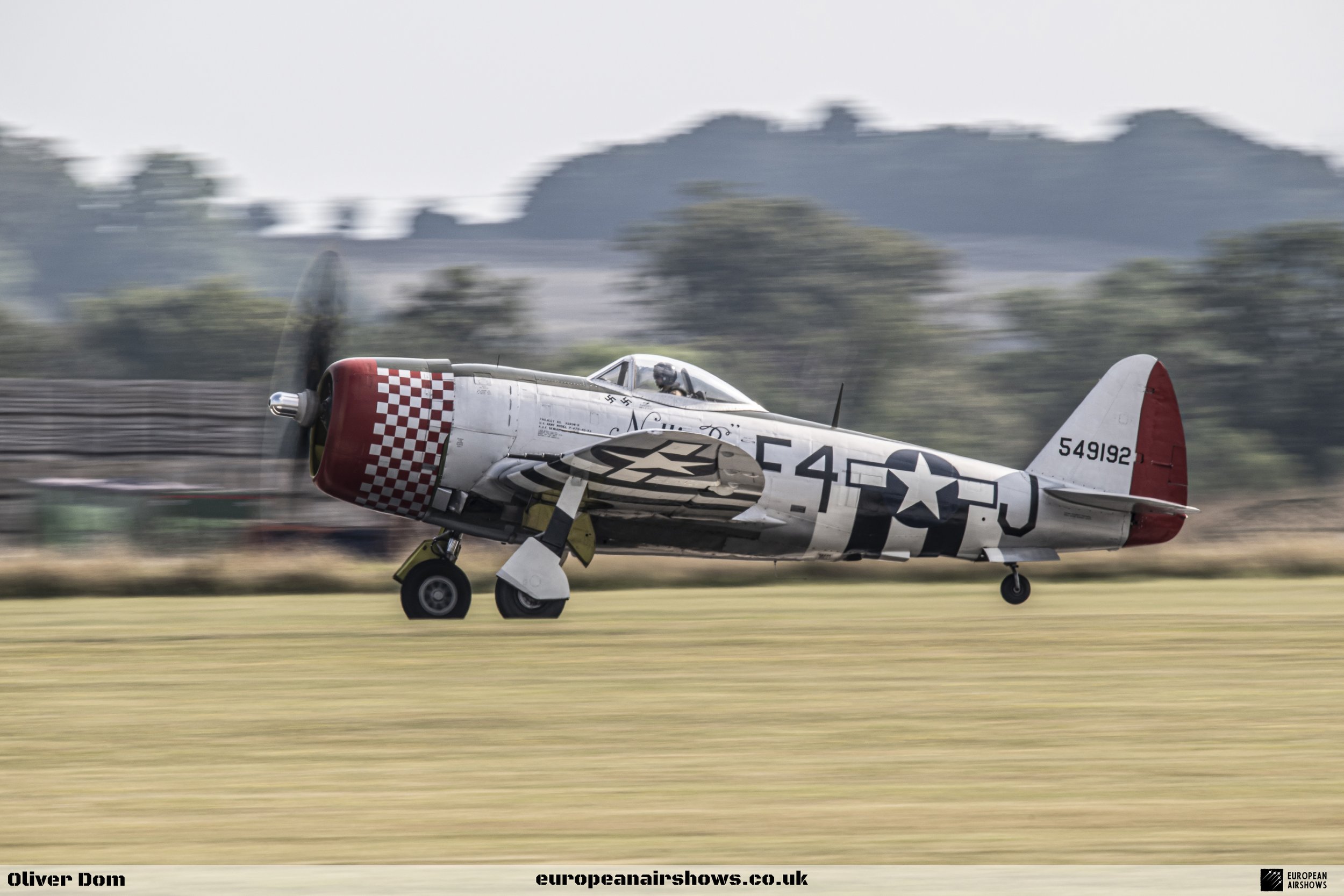
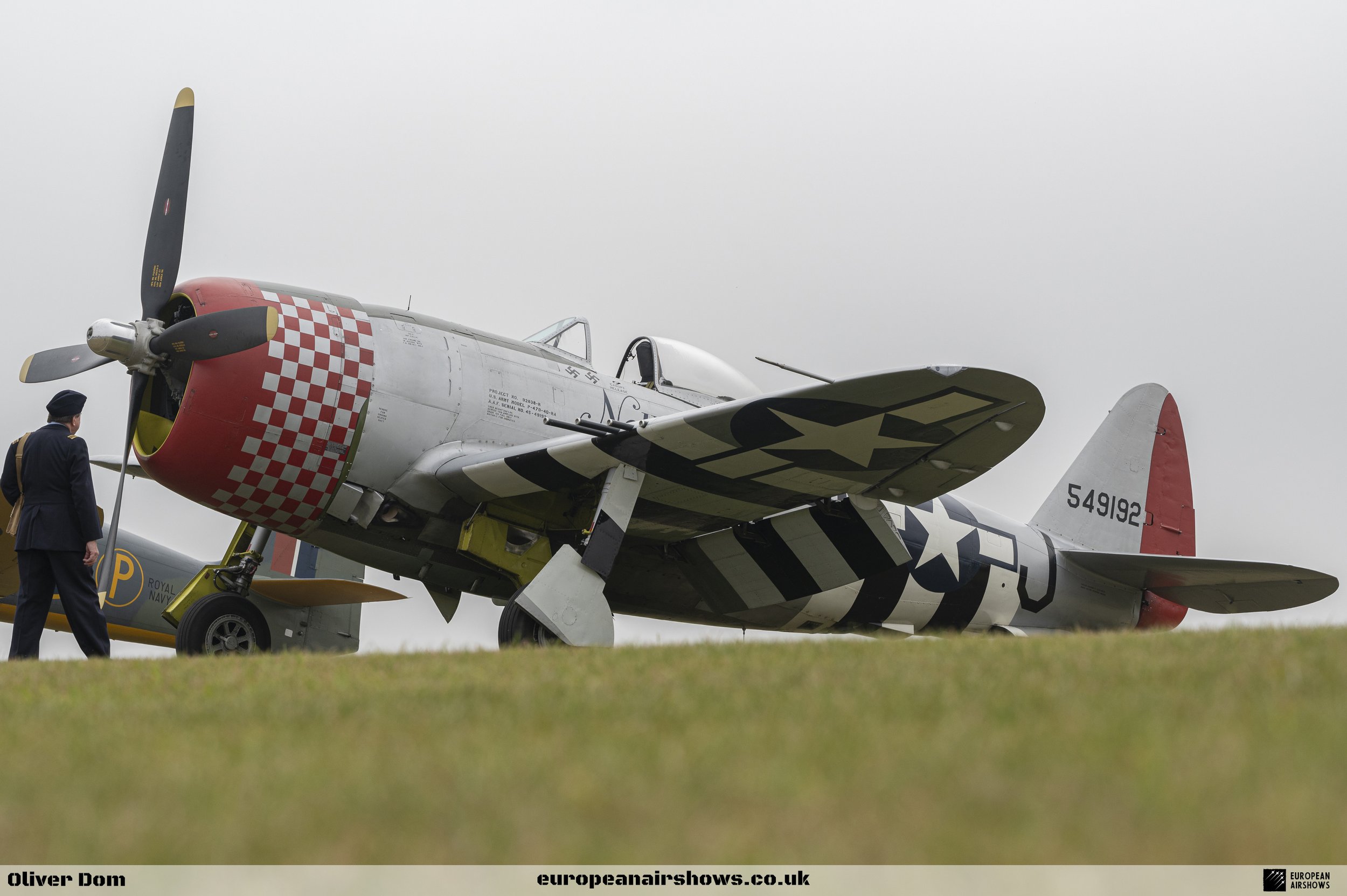
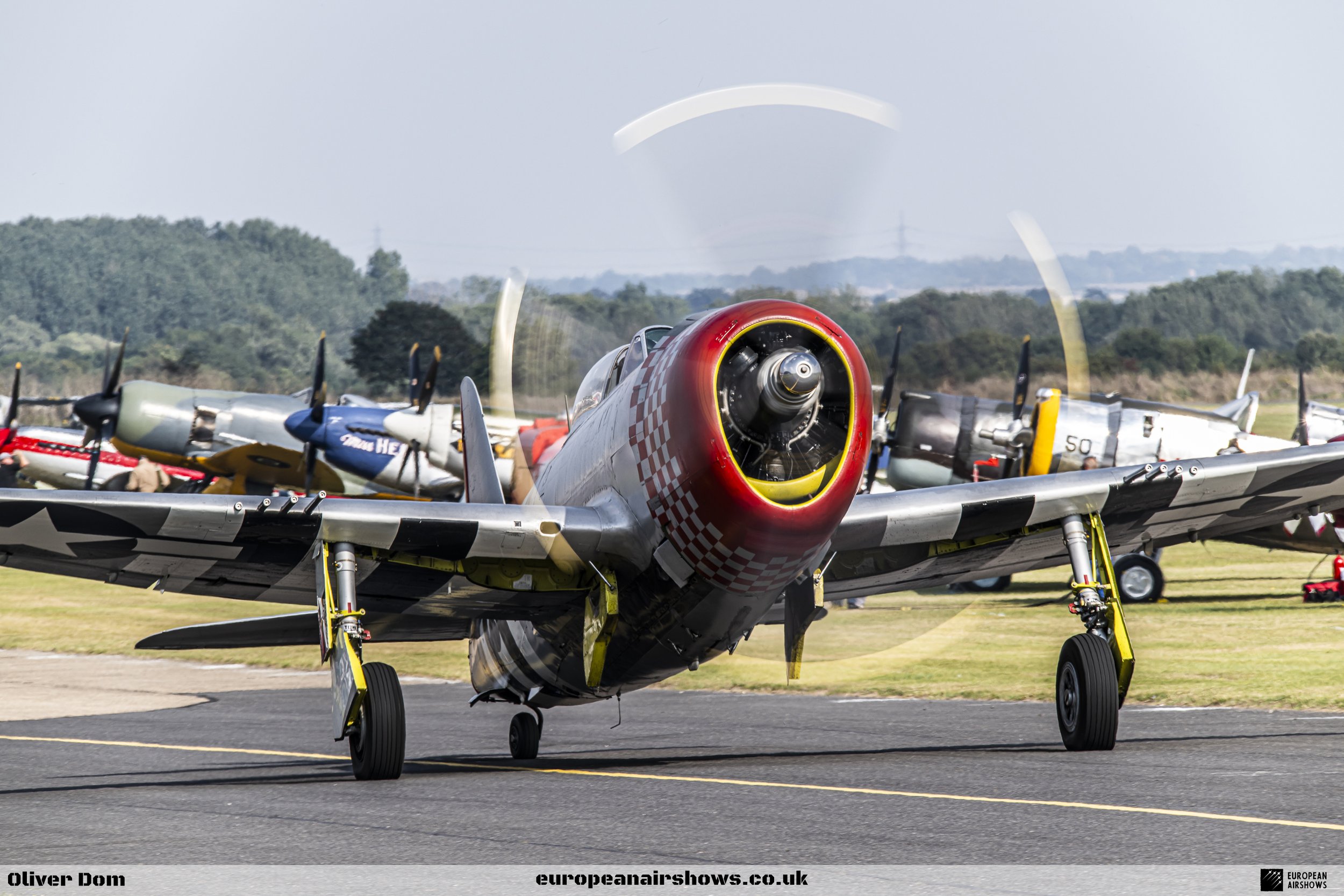



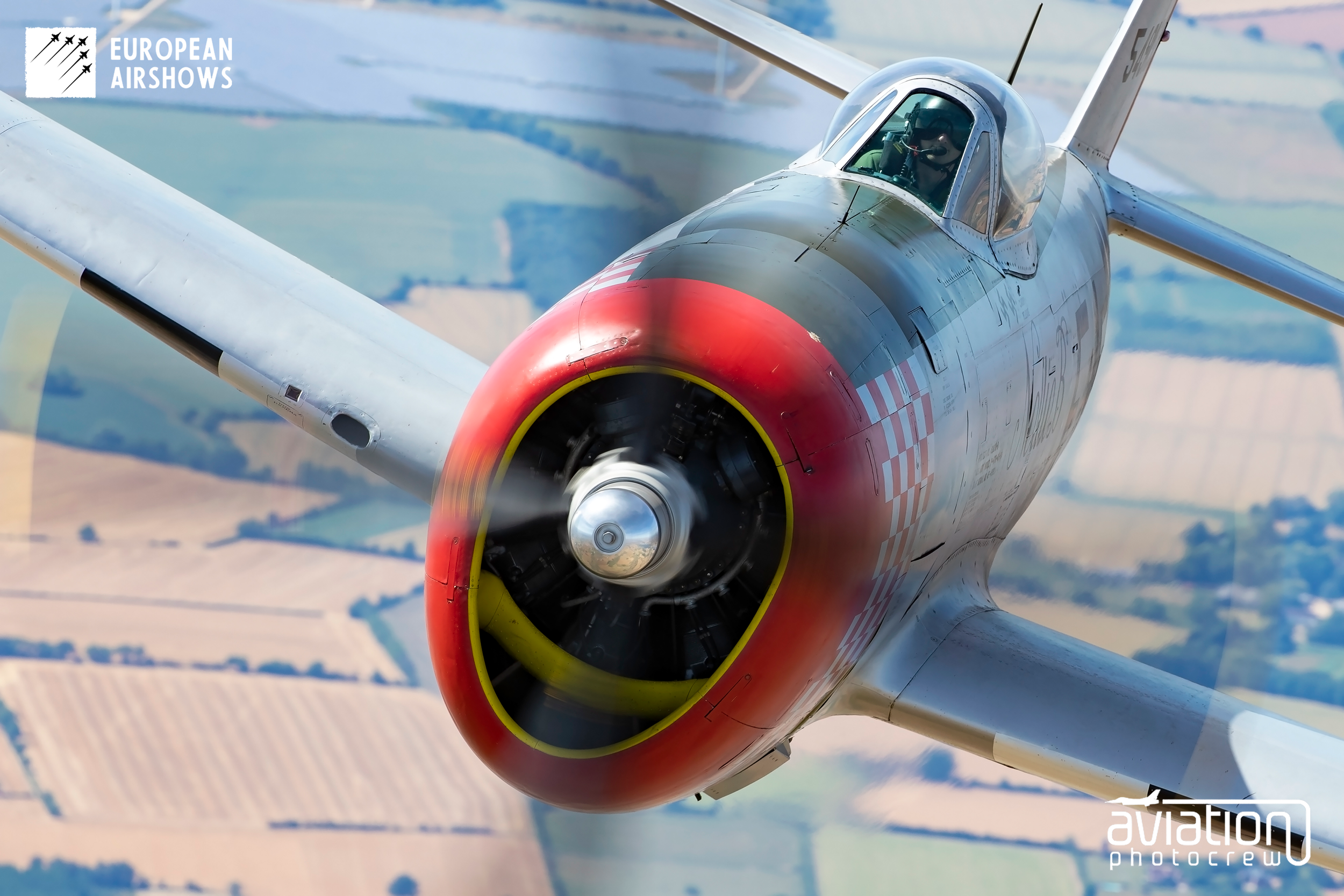
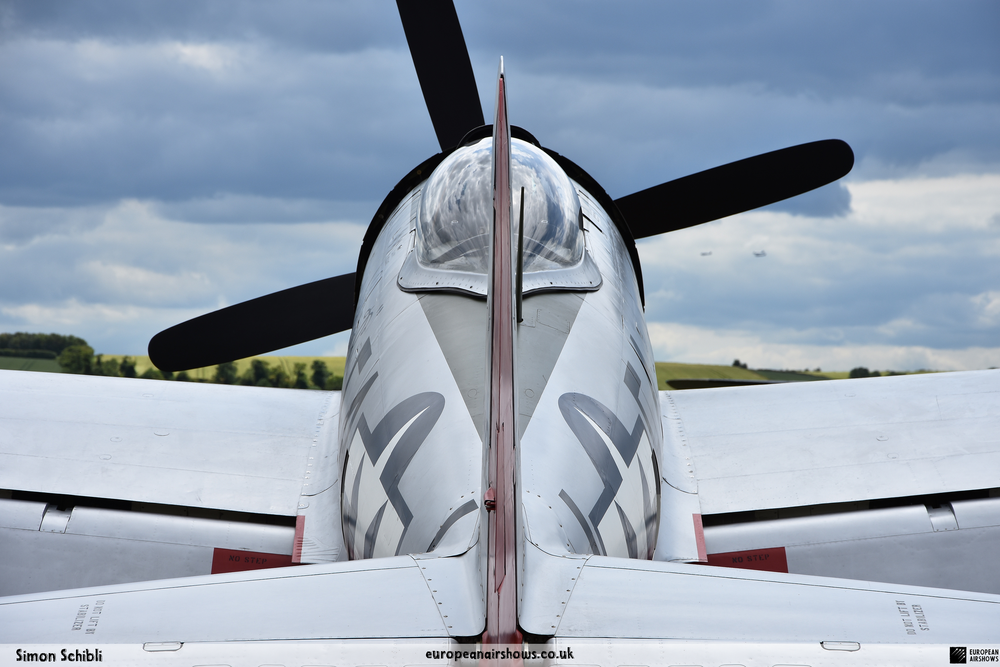
| Back to Top |






















